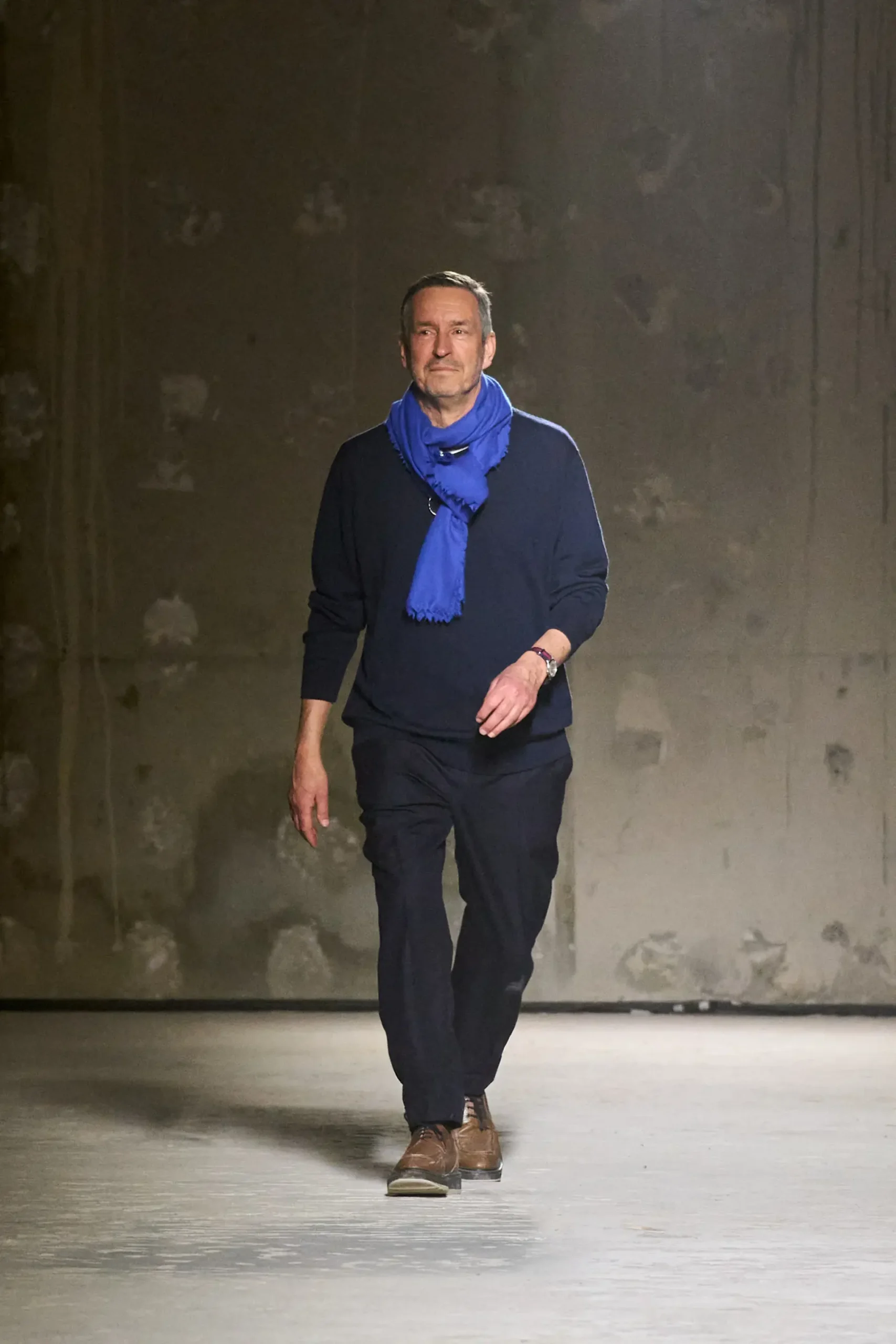Will Dries Van Noten’s Resignation Reconfigure Fashion for the Better?

In a darkened room, damp with the evaporated sweat of hundreds of eager NYFW attendees, I witnessed a show that was both tickling and disheartening. The designer, who will remain nameless, presented a series of colourful looks, each punctuated by windswept draping and surrounded by thumping soundwaves. The whole thing felt like a disruption for the sake of disrupting. The show seemed to think it needed to have the right kind of twist to explode across the FYPs to thousands of hungry fashion consumers (myself among them) and experience financial and cultural growth. The designer by no means “fell out of a coconut tree,” as Kamala Harris soliloquised last year. Rather, they were acting within the confines of high fashion. Dries Van Noten would never do such a thing.
This is not to say that Van Noten’s shows aren’t masterful displays of creativity and innovation. Take his women’s Autumn/Winter 1996–97 show, where a concrete runway was set against a curtain of vivid jewels that twinkled as cameras flashed. The collection reimagined patterns and silhouettes from the early 20th century by incorporating Y2K cuts and accessories. It was one of the shows that helped catapult Van Noten to worldwide acclaim.
Beginning his career as a member of the famed Antwerp Six, Van Noten released his first collection in 1986 and opened his first brick-and-mortar store in 1989. He was never bombastic or overly sensational—at least not for sensation’s sake. He didn’t rely on celebrity placements or viral moments to garner awareness. He insisted on only producing ready-to-wear garments in colourful textiles, even in the 1990s, when minimalism was all-encompassing. His defiance made the news of his retirement even harder to process.
Van Noten focused on creating clothes that people genuinely want to wear, steering away from elaborate shows based on dynamic sets and metaphors. Even as recently as the AW 2024 show, Van Noten used the colour pink as a playground for experimentation. “You can go quite far with colours, as long as you keep the shapes recognisable,” he told GQ in 2018.
Without “playing the game,” Dries Van Noten became one of the most beloved designers, entirely because of the aesthetic appeal of his clothing (he rarely launched any advertising campaigns or had distinct marketing strategies).
Now, after 38 years, Van Noten wants to make way for the next generation. Van Noten is stepping down so he can keep the fashion world growing. He is not interested in sensationalism, stagnation or sameness. He wants to reconfigure fashion for the better.
“Moving forward is absolutely necessary. Glorifying the past, definitely not,” Van Noten told HighSnobiety in an interview earlier this year. In his farewell letter, he wrote: “Now, I want to shift my focus to all the things I never had the time for. I’m sad, but at the same time happy, to let you know that I will step down at the end of June. I have been preparing for this moment for a while, and I feel it’s time to leave room for a new generation of talents to bring their vision to the brand. I have full confidence that they will do a great job.”
Local Decadence: the Many Lives of Posture Studio
By Mia Lewin
Next Gen 2023
By To Be Team
Simple, Sparkly, Striking Sandy Liang!
By Rachel Weinberg
Fashion Freak Show : Stripes, Sex and Scandal on Stage, in True Gaultier Style
By Alexia Petsinis
Valentino Fall 2022 is Pretty in Pink
By Anisha Khemlani
NOIR: Hyperbolised Forms
By Billy De Luca